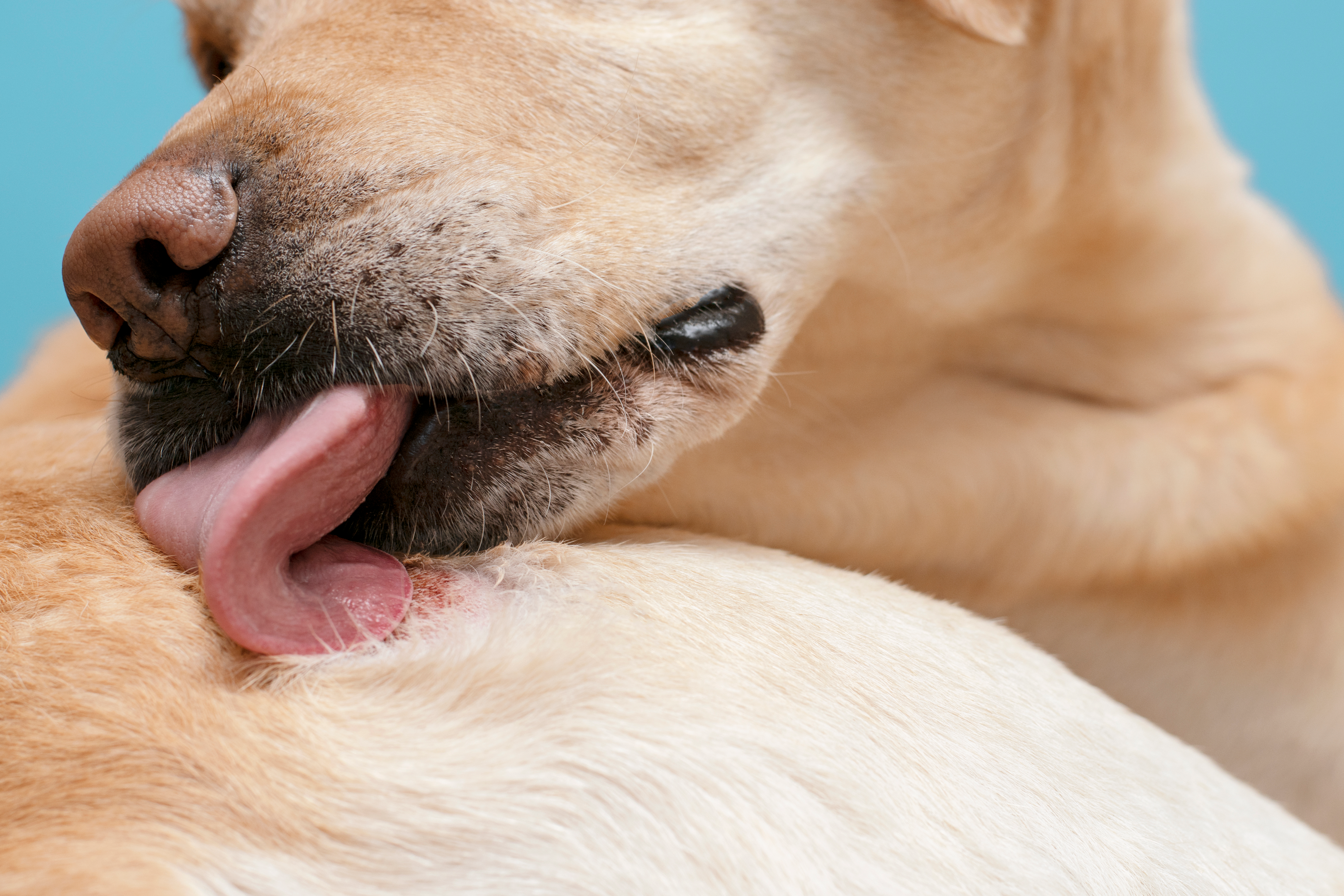
Have you ever seen any abnormal lump on your dog's skin and wondered if all is well?
Well, these are just skin tags on dogs. Just like human beings, dogs can also develop skin tags, and today at Rexipt's, we're going to talk about what skin tags are, their causes and symptoms, and how you can, as pet owners, get rid of skin tags on your dog.
So, please sit back and let us walk you through the world of skin tags. All this information will help you become well informed about your dog's skin conditions and be a better dog parent.
What Are Skin Tags?
A dog skin tag is medically known as fibrovascular papillomas. Most skin tags are mainly composed of collagen and blood vessels covered with skin. They are non-cancerous, harmless growths that may emerge anywhere on a dog's skin.
However, they commonly occur on the trunk, face, sternum, front armpits, and bony areas of your dog's body, like elbows, hips, or ankles. Eyelids and the area around the mouth are especially prone to getting skin tags.
Skin tags come in different forms. Each can appear as a firm, flat skin growth or have a soft and squishy stalk. Their sizes vary from a few millimeters to two centimeters. Some dogs can get large skin tags as well.
If a dog messes with a skin tag or repeatedly meddles with it, the tag's surface may get damaged, and worst case scenario, it can become infected. An infected skin tag can cause redness and pain, and you may also notice pus discharge.
However, skin tags are generally harmless, and it's okay to touch them if they aren't infected.
What Causes Skin Tags on Dogs?
While the exact cause of skin tags in dogs remains unclear, there are several theories out there that attempt to shed light on their origins.
These theories include:
-
Friction
Skin tags in dogs might show up because of friction, irritation, or injuries. You might spot them in your dog's skin folds or pressure points on their skin, like on your dog's elbows.
But these tags are not limited to these areas. They can pop up anywhere on your dog's skin.
-
Fibroblasts
Skin tags can also result from hyperactive cells called fibroblasts, which mainly generate fibers and collagen. This excessive activity may contribute to the formation of these benign growths on a dog's skin.
-
Dryness
Bathing your dog a little too much can make their skin dry. This dryness might also be a reason why multiple skin tags show up on their skin.
-
Genetics
Genetics could be a factor in why some dog breeds are more likely to get skin tags. This could be because of how their skin folds or its tendency to get irritated easily.
Breeds that often have more skin tags include - Cocker Spaniel, Boxer, Labrador Retriever, Dachshund, Bulldogs, Poodle, Bichon Frise, Shar Pei, Rottweiler, Beagle.
Symptoms of Skin Tags on Dogs
Skin tags on dogs might look like:
-
Nodule on Skin
Skin tags typically show up as soft, slightly lifted, skin-colored bumps, flaps, or wart-like skin growths. Sometimes, they may even have thick hair from hair follicles, and multiple growths might occur in one area.
A hairless lump is called a hexal hamartoma, while a hairy one is known as a follicular hamartoma.
-
Stalk-like growth on Skin
Certain skin tags are hanging from a stalk. If you notice a dangling growth, it's more likely a skin tag compared to a flatter growth, which might resemble different skin issues.
-
Excessive licking and rubbing

Skin tags may get irritated or bleed if they rub against something like a collar, harness, or another body part. Dogs may lick or chew the area with a skin tag to ease the pain, or sometimes just out of curiosity, causing further irritation.
How to Remove a Skin Tag on a Dog?
Attempting to remove a dog's skin tag at home is not recommended, as it can lead to pain, infection, or complications such as bleeding. Unless causing issues, it's best to leave canine skin tags alone or explore natural remedies, which we will talk about later.
However, here are four approaches a vet might use to remove skin tags on dogs:
-
Surgical removal

For skin tag removal, the vet uses general anesthesia, cuts off the tag, and may use stitches. It's like getting a little harmless procedure to take off the skin tag.
-
Cauterization

In cauterization, the skin tag removal is done using heat to keep the blood vessels covered and reduce bleeding. This process helps remove the extra skin, and it's like a careful way of getting rid of it without cutting.
-
Cryosurgery
Cryosurgery freezes the skin tag with extremely cold liquid nitrogen, making it fall off. This method is good for smaller tags, but sometimes, it needs a few attempts.
-
Ligation
The skin tag gets tied at its base to stop its blood supply in ligation. This makes the skin tag shrink and eventually fall off like it's drying up and dropping away on its own.
How to Get a Dog Skin Tag to Stop Bleeding?
If your dog's skin tag starts bleeding, don't panic. We know exactly what to do.
Start by gently cleaning the bleeding skin tag with a mild antiseptic or saline to prevent infections. If it's still bleeding, use a clean cloth or gauze pad to press on it until the bleeding stops.
Your dog might lick the area, so use a cone to keep them from meddling with it. After you are done cleaning and the bleeding has stopped, watch out for continued bleeding, size increase, color change, or discharge from the location of the tag.
If the bleeding persists or if there are concerning changes, it is essential to consult a vet for a check-up.
What Happens if You Don't Remove Skin Tags?
The majority of skin tags on your dog are usually not a problem. If your dog's skin tag isn't hurting or causing issues, you can keep an eye on it at home and regularly examine the tag to see if there are any changes or growths.
If the tag is on the eyelid, watch the eye for signs of irritation like redness, increased discharge, or squinting.
If you see sudden changes, schedule a vet appointment for a physical examination ASAP.
Home Remedies For Dog Skin Tags
While it's not advisable to remove a skin tag on your dog at home, there are some steps you can take to reduce its size and relieve the pain and discomfort.
A skin tag can get inflamed, so here are some natural methods to lessen inflammation:
-
Cold compress
Using a cold compress on the swollen skin tag can help reduce the swelling. Wrap a clean, ice-filled towel or cold pack in a cloth and gently place it on the affected area for a few minutes.
-
Chamomile Tea
Make some strong chamomile tea, let it cool, and soak a clean cloth or cotton ball to apply the cooled tea to the inflamed skin tag. Chamomile has natural anti-inflammatory qualities, providing a soothing effect.
-
Witch Hazel
Witch hazel is a natural liquid that helps reduce swelling. Mix a bit of witch hazel with water, put it on a cotton ball, and gently dab it on the skin tag that's swollen. It can make the swollen area feel better.
-
Coconut oil
Put a little bit of natural, cold-pressed coconut oil on the inflamed skin tag. It is known for its anti-inflammatory properties that can help with swelling and make the area feel better.
How to Naturally Prevent Skin Tags?

Preventing your dog from developing skin tags may be tricky, but there are steps you can take to maintain healthy skin and reduce the risk of growth.
Firstly, if your dog has a short, smooth coat, consider applying sunscreen to protect their skin. This can be especially important when spending time outdoors to shield their skin from potential sun damage.
Regular brushing is another key practice. It not only promotes the natural production of oils that keep the skin healthy but also helps eliminate dirt, loose fur, and any matting that could cause irritation.
Ensuring your dog receives a diet rich in skin-friendly nutrients can also contribute to overall skin health. A well-balanced diet helps prevent dryness and flakiness, reducing the likelihood of skin tags.
Moreover, be mindful of your dog's bathing routine. Bathing your dog too often can mess up the skin by reducing its natural oils, leading to dryness. When you do bathe your dog, consider using moisturizing products to help maintain skin hydration.
By including these practices in your dog's care routine, you can promote healthier skin and minimize the chances of skin tags.
Final Words
Taking care of a dog's skin tag is important. While we may not know exactly why they happen, we know that they are benign skin growths.
Since they are harmless, we do not recommend trying to remove them at home, and it's best to let the vet handle it.
Moreover, simple things like protecting our dogs from the sun, regular grooming, feeding them well, and not bathing them too much can help keep their skin healthy and reduce the chances of skin tags.
As responsible pet owners, staying informed and looking out for our dogs' skin conditions and needs is part of keeping them happy and healthy.
FAQ
Can I get rid of my dog's skin tag at home?
It is not recommended to remove your dog's skin tag at home, as it can lead to pain, infection, or other complications. Consult a veterinarian for safe and appropriate removal of any unusual skin growths.
Are skin tags more common in older dogs, or can they affect dogs of any age?
Skin tags can develop in dogs of any age, but they might become a common occurrence as the dog ages.
Can a dog's diet influence the occurrence of skin tags?
A nutritious diet is crucial for overall health, including skin health. Poor nutrition can cause the skin health to deteriorate. Giving your dog a high-quality diet may contribute to skin health and potentially reduce the likelihood of skin tags.



















